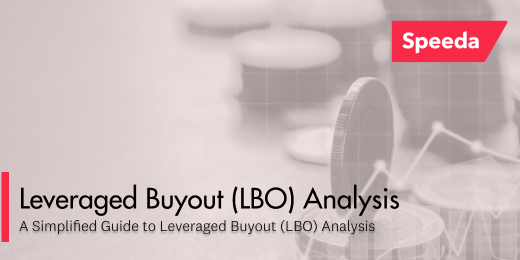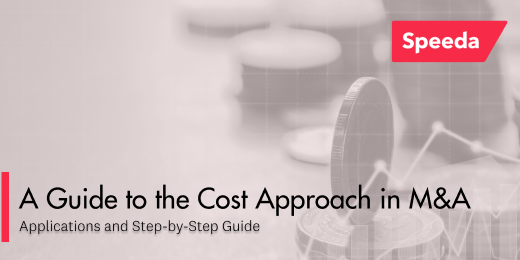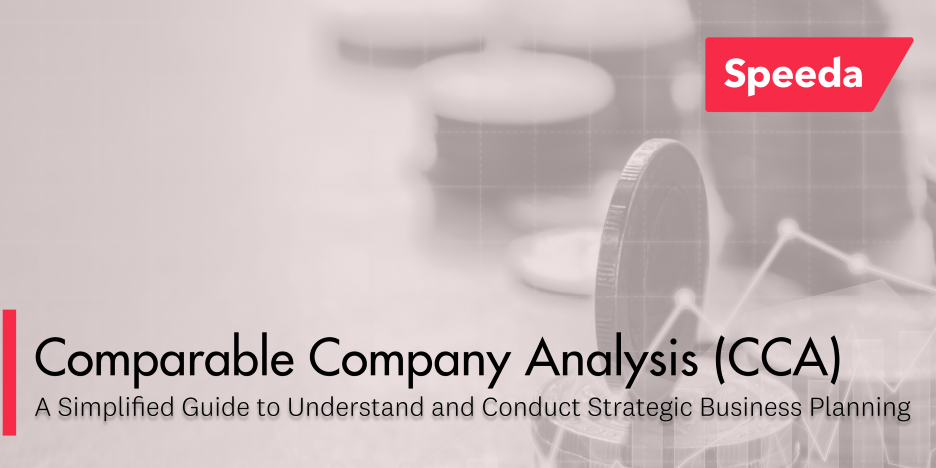Trung tâm tài nguyên
A Guide to Leveraged Buyout (LBO) Analysis

Understanding the Leveraged Buyout (LBO) Model
A leveraged buyout (LBO) is a financial method utilised primarily to acquire a company through the use of a significant amount of borrowed funds, typically done by a private equity (PE) company. In these transactions, the assets of the company being purchased, along with those of the acquiring entity, typically serve as collateral for the loans. The distinctive feature of an LBO is its high leverage ratio, often around 90% debt to 10% equity, which underscores its reliance on borrowed capital rather than substantial direct investment.
Why Use LBO?
LBOs are particularly advantageous for entities looking to make substantial acquisitions without deploying large volumes of capital. This model enables the acquisition of larger entities, potentially leading to rapid scale expansion. The strategic use of LBOs can be seen in various scenarios including taking a public company private, spinning off parts of an existing business, or transferring ownership in small private enterprises. Given the minimal initial equity investment required, the returns on equity can be substantial if the acquired entity continues to perform well post-acquisition. Here are the key objectives of employing an LBO model:
Financial Feasibility Assessment:
An LBO model helps to determine whether the financial structure of the buyout will sustain the debt burden over the investment period. This includes:
- Debt Servicing: Assessing whether the target company’s cash flows can adequately cover interest payments and principal repayments throughout the holding period.
- Debt Capacity Analysis: Estimating how much debt the target can support based on its earnings before interest, taxes, depreciation, and amortization (EBITDA), cash flows, and financial health.
Valuation of the Target Company:
The LBO model is critical in establishing the value of the target company under a leveraged buyout scenario. It involves:
- Entry Valuation: Determining the appropriate purchase price based on multiples (e.g., EV/EBITDA) applied to the target’s financial metrics.
- Exit Valuation: Projecting the company’s enterprise value at the time of exit, which helps in planning the exit strategy whether through a sale, public offering, or another buyout.
Return on Investment Calculation:
One of the primary goals of an LBO model is to calculate the potential returns on the investment for the equity holders (often a private equity firm). Key metrics include:
- Internal Rate of Return (IRR): The annualized effective compounded return rate which can be earned on the invested capital. IRR is a critical measure as it considers the time value of money and is a benchmark for private equity performance.
- Multiple on Invested Capital (MOIC): Measures the total return as a multiple of the initial investment, providing a straightforward metric of gain.
Strategic Decision-Making:
The LBO model supports strategic decision-making by allowing investors to simulate various scenarios and their outcomes based on different strategies and market conditions. This includes:
- Sensitivity Analysis: Testing how sensitive the investment’s returns are to changes in key assumptions such as cost savings, revenue growth, and exit multiples.
- Scenario Planning: Assessing the impact of different market and operational conditions on the company’s future financial performance.
Risk Assessment:
Assessing and managing risk is a crucial goal of the LBO model. It helps investors understand the risks associated with the leverage levels and the operational challenges of the target company. This can include:
- Default Risk Analysis: Evaluating the likelihood that the target company will fail to meet its debt obligations.
- Stress Testing: Applying worst-case financial and operational scenarios to test the resilience of the investment under adverse conditions.
Operational Improvements and Value Creation:
Post-acquisition, the LBO model can be used to track and plan for operational improvements and other strategies aimed at value creation. It helps in:
- Performance Tracking: Monitoring the financial and operational performance against the model’s projections.
- Value Addition Strategies: Identifying and quantifying the impact of operational efficiencies, cost reductions, and strategic growth initiatives.
How to Build an LBO Model: A Step-by-Step Guide
Step 1: LBO Entry Valuation
The foundation of an LBO model begins with calculating the implied entry valuation. This involves determining the enterprise value at entry by applying an entry multiple to the target’s EBITDA (Earnings Before Interest, Taxes, Depreciation, and Amortisation) — typically the last twelve months (LTM) or the next twelve months (NTM).
Formula:
Entry Valuation = Purchase EBITDA × Entry Multiple
This step sets the stage for understanding the scale of the financial undertaking and is critical in establishing the framework for the LBO deal structure.
Step 2: Sources and Uses of Funds Table
Next, sources and uses of funds table are created. This table delineates how the acquisition will be financed (sources) and the capital required (uses).
Key components include:
- Uses: Total capital needed, encompassing the purchase price and additional costs like M&A advisory fees, legal fees, and financing fees.
- Sources: This includes debt financing across various tranches (senior and subordinated debt), sponsor equity contribution, and potentially other instruments like preferred stock or mezzanine financing.
The balance of this table must align (Total Uses = Total Sources) to ensure the financial viability of the transaction.
Step 3: Financial Forecast and Debt Schedule Build
A comprehensive financial forecast of the target company is projected over a standard five-year horizon. This forecast integrates three financial statements to demonstrate how LBO assumptions affect the company’s financial trajectory, particularly focusing on the generation of free cash flow used to service the buyout debt.
The debt schedule is crucial here, detailing the dynamics of debt repayment, including:
- Revolver operations
- Principal amortisation
- Optional prepayments (cash sweeps)
- Interest expenses
This schedule ensures that all financial operations are accurately reflected and that the debt repayment strategy is viable.
Step 4: LBO Exit Returns Schedule (IRR and MOIC)
Determining the exit strategy involves estimating the exit enterprise value (EV) based on an assumed exit EBITDA multiple. The exit EV helps calculate the final equity value from which the LBO’s return metrics, such as the Internal Rate of Return (IRR) and Multiple on Invested Capital (MOIC), are derived.
Calculations:
- Exit Enterprise Value (TEV) = Exit Multiple × Exit Year EBITDA
- Exit Equity Value: Exit Enterprise Value (TEV) – Net Debt
These metrics provide a quantifiable measure of the investment’s success over its duration.
Step 5: LBO Sensitivity Analysis Table
Finally, a sensitivity analysis is conducted to assess the potential variability in outcomes based on different operating scenarios:
- Base Case: Most likely scenario.
- Upside Case: Optimistic scenario, exceeding expectations.
- Downside Case: Pessimistic scenario, underperforming expectations.
This analysis is pivotal, especially in private equity, where the substantial debt burden makes the financial structure of the target post-LBO quite vulnerable.
Pain Points in LBOs
- Complex Financial Modelling: Building an accurate LBO model necessitates a deep understanding of the target’s financial health, market position, and potential for sustainable cash flows. This involves intricate calculations and assumptions about debt structuring and repayment capacities.
- Thorough Due Diligence: Ensuring the financial and operational viability of the target company through detailed due diligence is critical. Any oversight can lead to over-leveraging, which might jeopardize the success of the buyout.
- Market and Industry Analysis: LBOs require a keen understanding of the industry landscape to forecast future trends accurately and assess the competitive positioning of the target company.
- Exit Strategy Formulation: Developing a robust exit strategy is crucial for realizing the returns on an LBO. This requires precise market timing and understanding the factors that would maximize the investment’s value.
How SPEEDA Can Help
SPEEDA, a comprehensive business intelligence research platform, is ideally suited to address these challenges through its extensive suite of features:
- In-depth Financial Data: SPEEDA provides access to financial metrics and data for over 10 million public and private companies across ASEAN-6, China, Korea, and Australia. This vast database enables users to perform thorough due diligence and financial analysis, critical for determining the target’s valuation and structuring the deal.
- Advanced Search Filters: For deal sourcing and target screening, SPEEDA’s advanced search capabilities allow private equity professionals to filter potential targets by region, industry, and financial performance. This targeted approach helps in identifying companies that best fit the LBO criteria, especially those with stable and predictable cash flows.
- Comprehensive Industry Reports: With access to 3,000 original industry research reports, SPEEDA users can gain rapid insights into market trends, competitive landscapes, and industry overviews. This information is crucial for assessing the strategic fit of a target within its industry and for planning post-acquisition strategies.
- Valuation and Deals Analysis: SPEEDA’s global M&A database aids in identifying comparable deals, which is essential for benchmarking entry and exit multiples and understanding current market conditions. This feature supports the critical steps of financial forecasting and exit strategy formulation in the LBO process.
- Due Diligence Support: The platform’s extensive data coverage enables comprehensive commercial and financial due diligence. Users can access detailed financials of key stakeholders, clients, and partners, thus mitigating risks associated with the transaction.
- Sensitivity Analysis Tools: SPEEDA’s analytical tools facilitate sensitivity analysis by allowing users to model different scenarios based on varying market conditions and company performance outcomes. This capability is invaluable for assessing the risk-return profile of potential LBOs and preparing for contingencies.
By integrating SPEEDA into the LBO analysis and execution process, private equity firms, venture capitalists, and M&A advisors can significantly enhance their efficiency and effectiveness. The platform not only streamlines the labor-intensive aspects of LBO transactions but also provides a strategic edge in making informed, data-driven decisions. For professionals engaged in high-stakes leveraged buyouts, SPEEDA offers the tools needed to navigate the complexities of LBOs with confidence and precision. For more information or to start a free trial, visit SPEEDA.



























